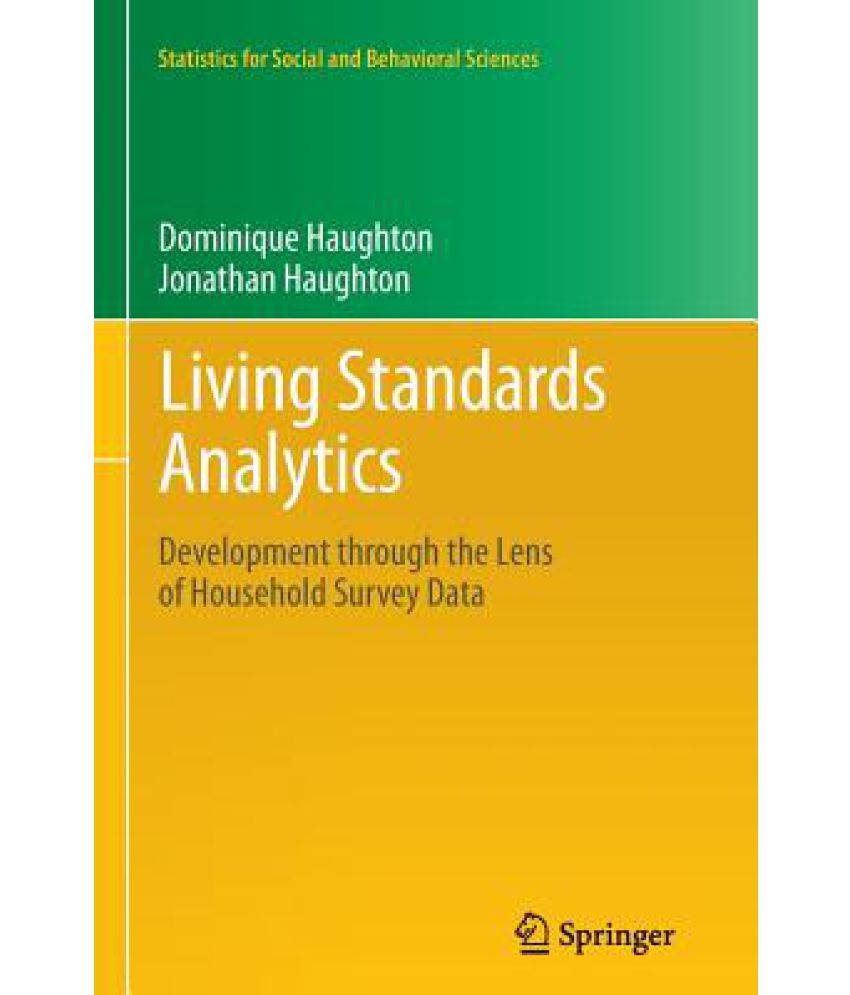Something went wrong. Please refresh the page and try again.
Something went wrong. Please refresh the page and try again.
Notifications can be turned off anytime from settings.
Item(s) Added To cart
Qty.
Something went wrong. Please refresh the page and try again.
Something went wrong. Please refresh the page and try again.
Exchange offer not applicable. New product price is lower than exchange product price
Please check the updated No Cost EMI details on the payment page
Exchange offer is not applicable with this product
Exchange Offer cannot be clubbed with Bajaj Finserv for this product
Product price & seller has been updated as per Bajaj Finserv EMI option
Please apply exchange offer again
Your item has been added to Shortlist.
View AllYour Item has been added to Shopping List
View AllSorry! Living Standards Analytics is sold out.


You will be notified when this product will be in stock
| ||||||||||||||
Brief Description
This volume explores the analytical techniques involved with household survey data analysis. Policy problems motivate a discussion of relevant methods, while examples from the author's own work illustrate the strengths and weaknesses of the techniques discussed.
Learn More about the Book
The purpose of this book is to introduce, discuss, illustrate, and evaluate the colorful palette of analytical techniques that can be applied to the analysis of household survey data, with an emphasis on the innovations of the past decade or so.
Most of the chapters begin by introducing a methodological or policy problem, to motivate the subsequent discussion of relevant methods. They then summarize the relevant techniques, and draw on examples - many of them from the authors' own work - and aim to convey a sense of the potential, but also the strengths and weaknesses, of those techniques.
This book is meant for graduate students in statistics, economics, policy analysis, and social sciences, especially, but certainly not exclusively, those interested in the challenges of economic development in the Third World. Additionally, the book will be useful to academics and practitioners who work closely with survey data. This is a book that can serve as a reference work, to be taken down from the shelf and perused from time to time.
On the Back Cover
The purpose of this book is to introduce, discuss, illustrate, and evaluate the colorful palette of analytical techniques that can be applied to the analysis of household survey data, with an emphasis on the innovations of the past decade or so.
Most of the chapters begin by introducing a methodological or policy problem, to motivate the subsequent discussion of relevant methods. They then summarize the relevant techniques, and draw on examples many of them from the authors own work and aim to convey a sense of the potential, but also the strengths and weaknesses, of those techniques.
This book is meant for graduate students in statistics, economics, policy analysis, and social sciences, especially, but certainly not exclusively, those interested in the challenges of economic development in the Third World. Additionally, the book will be useful to academics and practitioners who work closely with survey data. This is a book that can serve as a reference work, to be taken down from the shelf and perused from time to time.
Dominique Haughton is Professor of Mathematical Sciences at Bentley University and Affiliated Researcher at Universite Toulouse I.
Jonathan Haughton is Professor of Economics at Suffolk University and Senior Economist at the Beacon Hill Institute for Public Policy."
Review Quotes
1.
Overall, the book is highly accessible and nicely produced. The authors characterise it as a gateway book, and I think that, for researchers in policy analysis and household survey work who learnt their trade some time ago, this is an apt description: The book provides an excellent introduction to some of the more recent developments. I shall certainly recommend it to colleagues in the public policy domain...It includes traditional staples such as linear regression and sampling, but also more recent and advanced tools such as the use of directed acyclic graphs in modelling causality, Kohonen networks to group data, Bayesian approaches, propensity score matching, and survival models. It also placesconsiderable emphasis on the power of modern graphical methods with the consequence that the book has some very attractive colour diagrams, such as bubble plots and cartograms, which certainly demonstrate the power of modern tools.
International Statistical Review, 81, 2, Review by David J. Hand"
The images represent actual product though color of the image and product may slightly differ.
Register now to get updates on promotions and
coupons. Or Download App